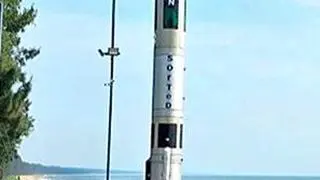The moon is a tempting place to build a base to launch space exploration missions. It is easier and cheaper to launch rockets (if you build them right there), because of the moon’s low gravity. But then, you have to get to the moon first, right? How nice it’d be if there was some sweet spot closer home to build such a base?
Well, indeed, there are two such sweet spots — the second was discovered only recently.
They are ‘Trojan asteroids’. These kinds of asteroids travel alongside a planet in its journey around the sun. A fellow-traveller, a hamsafar!
The second Earth Trojan asteroid, named 2020XL5, was discovered in late 2020, but confirmed only recently — scientists were not sure whether the asteroid was truly a hamsafar, or one that happened to be close to Earth. 2020XL5 is about 1.2 km across — thrice as big as the first Earth Trojan asteroid, named 2010TK7.
Asteroids are difficult to find because they are small and typically don’t reflect much light (low albedo). 2020XL5 was particularly elusive because it was at an angle where it couldn’t be seen except with very large telescopes.
Both the Earth Trojan asteroids sit at the Lagrange point 4 (L-4), which is one of the five spots of equilibrium between the Earth and the sun (a Lagrange point between two bodies is where an object remains stable, and won’t drift away, because it is pulled with equal force by the two bodies).
Perched at L-4, 2020XL5 leads the Earth in the journey around the sun; the asteroid’s route takes it closer to the sun than Venus and farther than Mars, at the nearest and farthest points in the orbit. Because of the interactions with Venus, scientists believe 2020XL5 will eventually drift away after 4,000 years.
But for now, its presence is mouthwatering. It is large enough to build space stations on. Besides, who knows how many more Earth Trojans are lurking in the dark shadows? If we find more, there could be opportunities to even mine minerals.








Comments
Comments have to be in English, and in full sentences. They cannot be abusive or personal. Please abide by our community guidelines for posting your comments.
We have migrated to a new commenting platform. If you are already a registered user of TheHindu Businessline and logged in, you may continue to engage with our articles. If you do not have an account please register and login to post comments. Users can access their older comments by logging into their accounts on Vuukle.